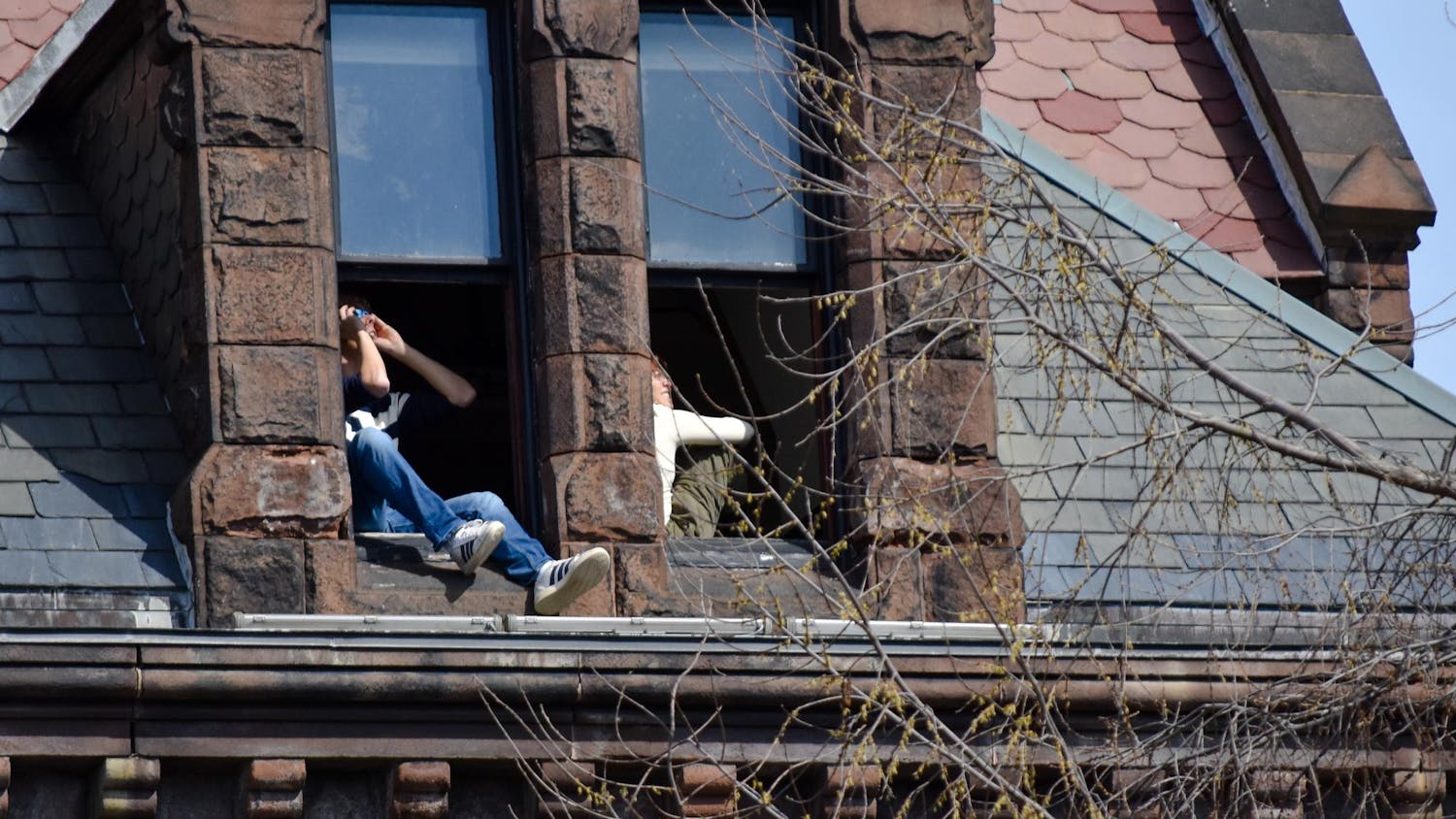Opportunity, the Mars Exploration Rover, is on the edge of a great endeavor, literally. The rover, launched in July 2003, is now positioned to begin exploring the 14-mile diameter Endeavour Crater as soon as Mars' winter ends, said John Callas ScM '83 PhD '87, project manager of the NASA Mars Exploration Rover Project. A crowd of about 50 people congregated in Metcalf Auditorium last night to hear him speak.
Callas took his audience through the eight-year history of the two Mars rovers, Spirit and Opportunity, giving them a glimpse of what he described as the "exciting adventure that still continues."
In his introduction, Professor of Geological Sciences Jim Head recalled sitting with astronomer and author Carl Sagan and examining pictures from the 1976 Viking missions to Mars. Unlike the Mars rovers, the Viking was stationary and frustratingly tantalizing, Head said.
"It enticed us to think about what was over the horizon," he said. "We were just fundamentally itching to see what Mars had in store for us."
Callas said he felt that same itch, especially after the 1996 Mars Global Surveyor provided a map detailing the topography of the planet and revealed a "very low and smooth northern hemisphere," he said. "Did Mars have an ocean? Did Mars have an abundance of water? If so, what happened to it, where did it go?"
Those questions led to even more exciting inquiries. "Is Mars habitable? Was it habitable? What does it mean for our own planet if Mars could change drastically?" Callas asked.
He then showed the audience photographs of the rovers — each with six independent wheels, nine cameras, a robotic arm with four unique tools and solar panels to provide power — that would begin to answer those questions. "This is a robotic geologist," Callas said.
The mission was initially designed to last for ninety days. Callas said when Spirit landed on Jan. 4, 2004, scientists could see hills in the distance through its cameras.
At the time, Callas and his colleagues did not know that Spirit would eventually climb those hills in the first ever "martian mountaineering" attempt and that Opportunity would travel over 34 kilometers, exploring three craters and sending back evidence that liquid water once existed on the planet.
Spirit eventually became stuck in loose material and lost power in 2010. But before it stopped communicating with Earth , the rover discovered water-altered rocks and evidence of a hydrothermal system — a hot aqueous environment that may once have been a source of liquid water, energy and potentially even a thriving ecosystem, Callas said.
Spirit's sister, Opportunity, has also sent evidence of water to Earth, including images of sedimentary rocks, Callas said. Opportunity was also able to drive into craters, he said, revealing older parts of rock and giving scientists a "powerful set of measurements."
Opportunity is now poised to enter its largest crater yet, and a new nuclear-powered rover, Curiosity, is slated to join it on Mars this August. The new rover, which cost between $2.4 and $2.5 billion, is five times the size of Spirit and Opportunity and is equipped with an analytical chemistry lab to detect the presence of organic molecules, Callas said.
"There's an ongoing armada of surface exploration on the planet Mars," Callas said. "We are trying to answer great questions about the planet."




